
How light is too light for a single rope? With the Siskin Eco Dry 8.6mm, Edelrid—a brand no stranger to pushing boundaries—is testing the limits of what a single rope can be. And for climbers pushing their own limits, the Siskin offers a specialised solution. It may be a niche product, but its performance benefits could make all the difference when marginal gains count. With triple certification and strong eco credentials to match, we put it to the test this spring to see how it performs.
In Use
The Siskin comes in various lengths form 50m-100m. With long Continental sport climbing pitches in mind, we went for 80m.
This rope's greatest strength is its weight—or lack thereof. At just 48g/m, it undercuts other lightweights such as the Mammut 8.7mm Alpine Sender at 51g/m. This makes it a dream for anyone pushing grades, or in a setting where every gram matters. It's a prime candidate for hard redpointing, for instance, particularly on long or steep routes where rope drag and weight can really stack up.

Close to the ground or whilst on blocky terrain it's been good to practice a bit more caution as the springy nature (34% dynamic elongation) of this rope means you can fall a little further than expected, although it's not to the point where this becomes too alarming. And with a soft impact force (8.5kN) catches feel nice and soft, and there is no need for a belayer to jump and play into this too much.
It also comes into its own at crags with long or steep walk-ins—Céüse being a prime example—where saving weight in your pack can make a tangible difference to your day.
That said, the rope's thin 8.6mm diameter and minimalist construction make it less suited to more abrasive rock types or heavy usage. It's not a rope I'd use for repeated dogging or high-frequency indoor sessions—it's a performance rope, not a workhorse.
Weight and Durability
Weight is the headline here: its mere 48g per metre makes this the lightest single rope currently available. This gives it obvious appeal for redpointers or on long walk-ins to alpine sport crags—indeed, for any scenario where every gram counts. Pack size here is also nice; my 80m looks more like a 70m in my pack.
For climbing near your limit, this is the kind of rope that helps rather than hinders
Durability-wise, the Siskin performs well for what it is—but you have to accept that it's not built to take a beating. I've tried to test this as best I can by climbing exclusively on one end of the rope while onsighting, working, and redpointing. That said, there have been occasions when my partner opted for a thicker rope when heading to crags with particularly abrasive rock. The tightly woven sheath offers decent wear resistance, but it won't outlast burlier ropes under constant falls or high-friction terrain. If I continue to use the rope in this way I'll be cutting an end quicker than I would many of my previous ropes, although let's reiterate that this is not a weakness since it isn't how the Siskin is intended to be used.
It's not the rope I'd choose for regular indoor use, heavy projecting, or rough rock, but Edelrid's Eco Dry finish does help bolster its lifespan by repelling water and dirt. This also prevents it from getting bogged down in damp conditions—another win for weight-conscious climbers.
Handling
On lead, the Siskin handles like a dream. Its slim profile makes for slick clipping and smooth movement through gear. The low drag is especially noticeable on wandering pitches or overhanging lines. If you're climbing near your limit, this is the kind of rope that helps rather than hinders. Equally whilst falling, the small diameter also makes for a springy catch - nice for long overhung routes, but something to also be aware of if using on blocky terrain or sections close to the ground.
In the hand, the Siskin feels supple and smooth, gliding easily while clipping. Some of that fluidity comes down to its thin diameter, but I've also been pleasantly surprised by how well it resists kinks and twists. For such a skinny rope, I expected more tangles—yet it's handled more cleanly than some thicker ropes I've used. Maybe that's partly down to how I've treated it, but I was anticipating more fuss, and I'm pleased to say that hasn't really materialised.
For belaying with a rope this thin, it's important to be aware of your devices' limits. Belayers will want to use a device that's certified for thinner ropes. On a recent trip to Spain it turned out that my partner's Edelrid Eddy device was not approved for the thin 8.6mm diameter. Luckily my Petzl GriGri could still accommodate the rope, however it's almost right at the GriGri's 8.5mm limit. In reality, with the correct experience this is actually fine - pay-outs are fluid and catches feel smooth. That said, care is most certainly needed. The narrow diameter leaves less margin for error, so it's a rope best handled by experienced belayers. I wouldn't be entirely comfortable having a beginner catch or lower me on it for this reason.
Eco Credentials
The Siskin is bluesign certified and the Eco Dry treatment is also PFC and PFAS-free.
Verdict
At £275 for 80m the Siskin Eco Dry 8.6mm is a top-end purchase, and not one you'll be making for general day-to-day use. This is unashamedly a specialist rope with a clear purpose: keeping weight to a minimum for long hard climbs. It's not an all-rounder or a workhorse, and while it excels in performance, especially for ambitious climbers, its high price tag reflects its niche purpose. Be mindful of its limitations—it's not built for heavy, constant use, it's not compatible with all belay devices and you shouldn't expect it to last as long as more durable ropes. Still, if you're looking to shave off weight for high end redpointing, the Siskin delivers exactly what it promises. This is an impressive product from Edelrid, a brand that's not afraid to push the limits.
















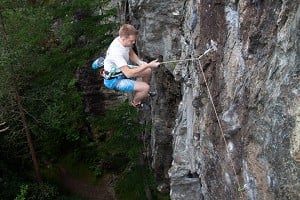


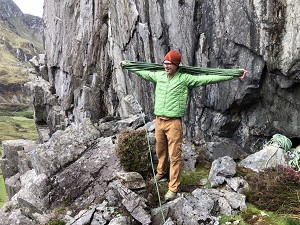

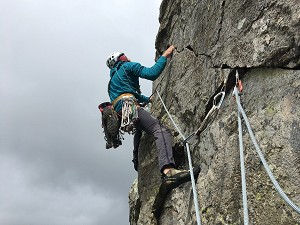
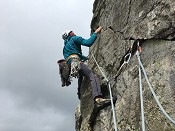
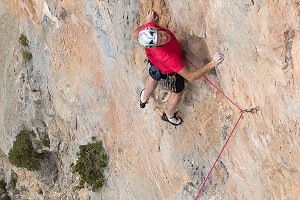
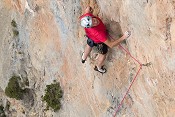
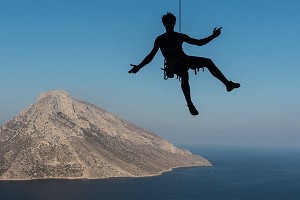

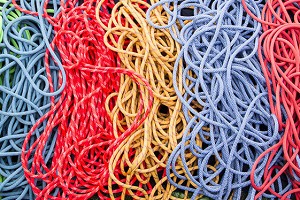

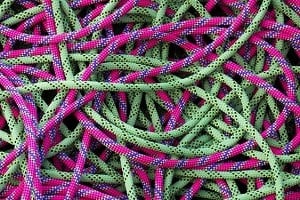
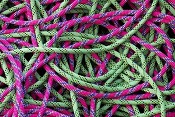
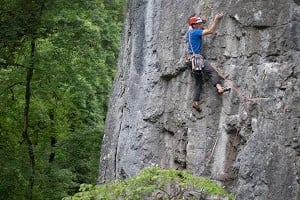
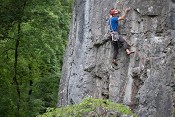
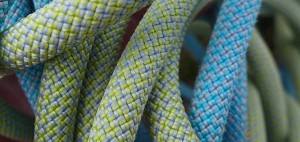

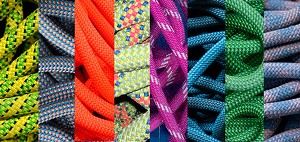

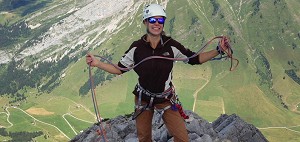

Comments
How does it compare weight-wise to other 8.6mm ropes? It's cross-sectional area is 97.7% of the Mammut, yet the weight is 94.1% of it.
Edelrid claims this is the world's lightest rope. But it's the same weight as the Beal Opera, according to specs. It would be nice if the review could directly compare the weight of the 60m versions of these two. Don't forget to compare the length of the 60m versions and make sure they are equally long (which I bet they're not). That said, I think that the main use case for using this rope is on multipitches where you want to save weight, and where a small diameter is also nice to have when you rap with the tag line, double rope style.
For hard sportclimbing, I think that slightly bigger ropes (Canary, Joker) already offer some extra durability.
My 60m opera's were 63m when new out of the packet.
I measured them both with a cordage meter.
I thought the Beal Opera triple rated half rope is the lightest single rope? 8.5mm
It's really interesting to compare this rope to the not very successful Edelrid Corbie of a dozen years ago https://www.ukclimbing.com/gear/climbing/ropes/edelrid_corbie_-_for_when_weight_is_everything-6738 The Corbie was also 8.6 mm but 51 gram/m rather than 48 here, so (and I know these figures aren't super-accurate) presumably the Corbie was denser in some way. John doesn't seem to have worn his Siskin excessively, which was the serious issue I had with one of the two Corbies I reviewed. Looking on the Siskin's product page https://edelrid.com/gb-en/sport/ropes/siskin-eco-dry-8-6mm?variant=4312316 it is actually a triple rated rope, but Edelrid don't seem to be making much of that - call it the "lightest single rope" in the world. So I guess it's just improved technology over the last decade that has let them build a rope that is the same diameter as the Corbie but either has a thicker sheath or at least a more abrasion resistant sheath, rather than them focusing on a thin rope that only was designed for passing the single rope standards, rather than that as well as the half and twin standards (although perhaps if you make a rope that passes the single standard it will by default pass the twin and half ones also?).